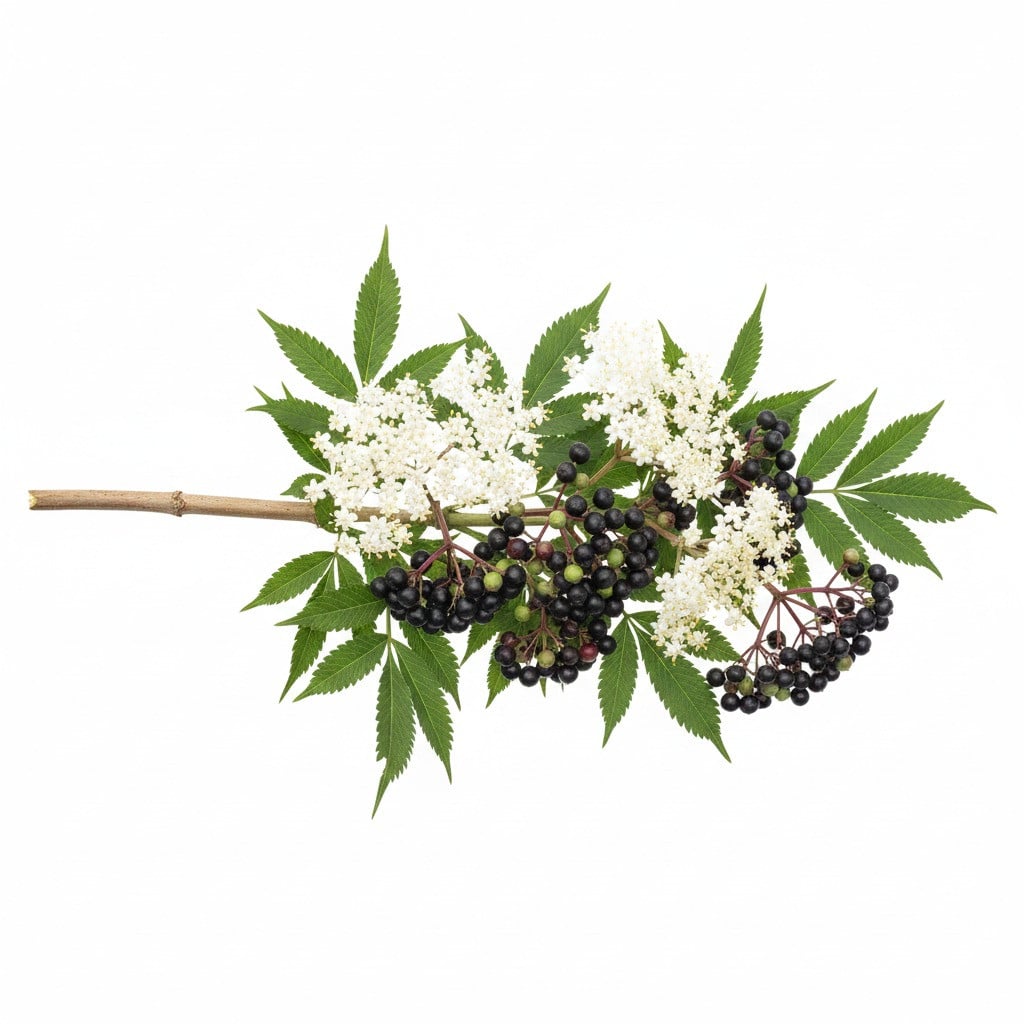Elderberry

Elderberry
Sambucus
Plant family
Moschatel family (Adoxaceae)
Season Overview
Planting
Harvest
Harvest
J
F
M
A
M
J
J
A
S
O
N
D
1ST YEAR
FOLLOWING YEARS
Details
Light requirement
Sunny
Water requirement
Dry
Soil
Medium (loamy)
Nutrient requirement
Medium
Plant distance
100 cm
Row spacing
100 cm
Seeding depth
5 cm
Instructions
Description
Elder (Sambucus) belongs to the genus of muskweed (Adoxaceae). The black elder (Sambucus nigra) is the best known and most widespread in our country and is also called lilac bush, elder or holder. It was valued early as a cultivated and medicinal plant and was said to protect against mischief. The woody plant grows fast, strongly branched, round-crowned and can grow up to 10 m/10.9 yd high and 4 m/4.4 yd wide. The white elderberry flowers can be made into elderberry syrup or baked in dough. If the blossoms are left, insects and birds enjoy the food and the resulting berries. The black drupes can be made into elderberry juice. However, the uncooked berries are poisonous, and the seeds should be removed. Except for the flowers, the other parts of the elderberry are also poisonous. Elderberry is perennial.
Origin:
Central Europe
Growing tips
Elderberry can be propagated by cuttings. To do this, cut them in the fall and put in the fertilized soil on a frost-free day. But you can also sow elderberry directly from seed in the fall, but this is laborious and brings more difficulties. After planting it should be well watered, you can also cut back the shoots a little, then it loses less water. Elder likes calcareous soil. Elder is a shallow rooter therefore sufficient distance from other trees or shrubs should be kept (from other elderberry shrubs about 1 m/1.1 yd, from other trees 2-3 m/2.2-3.3 yd). If the berries are used, harvest only the ripe berries, as the unripe berries remain poisonous even after cooking. Otherwise, the elderberry is very hardy and undemanding. It can be grown both in shrub and tree form. In October, the harvested branches can be cut back or between January and March.
Antagonistic Plants
No antagonistic plants
Diseases
No diseases
Pests
Aphids